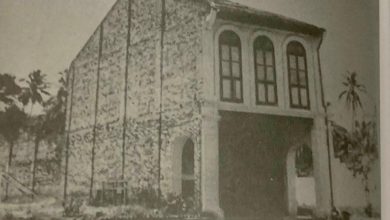Heritage: Inside the House of Kak Nadimah, Descendant of Raja Bilah


By Vivien Lian


I brought Adam from Peace Be Upon You cafe along to her house after I was told by Puan Hafizah, whom I met at Rumah Besar Raja Bilah, about Kak Nadimah’s antiques collection.
As we got out from the car, we couldn’t help exclaiming about the spacious compound of the house with greens growing spontaneously around the periphery. Then a monitor lizard ambled past us silently.




This is certainly not a place just for staying but living
We got into the house and both of us were amazed by how breezy it was in the house at 7pm despite there being no air conditioning. Necessity, as the mother of invention, has created a traditional style of Malay houses being built with a deep understanding of our tropical climate. Hence good ventilation is critical.




Vintage serving tray with glass holder Vintage oil lamp and bottle
The few characteristics of a traditional Malay house are:
- House raised on stilts so that it catches wind of high velocity
- Attap roofing and lightweight building materials of low-thermal capacity give good insulation against heat
- Plentiful open-able windows provide good ventilation and views for the house
- Open interior spaces with minimal partitions allow further ventilation.


Tepak Sirih or betel nut container is an object that is often used in the community, especially when conducting ceremonies and traditional rituals including weddings. It is a rectangular wooden box wrapped with gold embroidered velvet holding brass containers containing areca nut, lime paste, gambier (herb) and shredded tobacco. The usual items found in Tepak Sirih are the tray; the betel leaves holder, brass containers and an areca nut cutter. The leaves are peppered with lime, gambier and areca nuts. Tobacco may also be added for flavour. The betel leaf is held and placed on the palm then lime is smeared down the betel, small bits of gambier and areca nut are placed in the centre of the leaf. The leaf is then folded into a small package and chewed.


- A collection of vintage kitchenware such as teapots, tureens, teacups, plates and bowls.
- The two hat-like objects hanging on the wall are actually food covers wrapped with an embroidered cloth. Below the food covers are rose water sprinklers, usually used to sprinkle rose water on the bride’s hands in Malay weddings.
- Metal suitcases and wooden chests.






